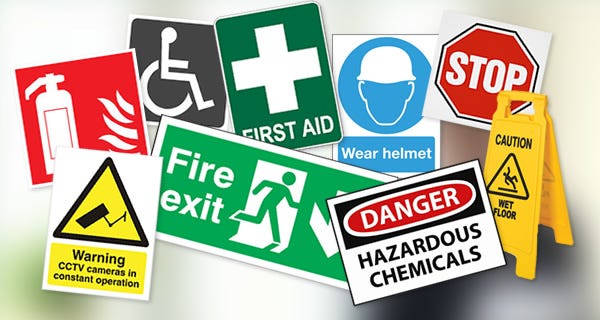In a busy production unit, every second counts. The workflow needs to be smooth, and the atmosphere safe for optimal productivity. One crucial but often overlooked element that plays a pivotal role in this dynamic is safety signs. These simple yet effective tools do more than just indicate potential hazards—they guide, alert, and streamline operations. Let’s explore how safety signs contribute to boosting workplace efficiency and fostering a productive environment.
The Role of Safety Signs in Workplace Efficiency
Safety signs are more than just a compliance requirement; they serve as an integral part of the workplace infrastructure. In a high-stakes environment like a production unit, efficiency can be significantly impacted by clear communication and visual cues. Safety signs provide immediate, concise information about potential hazards, emergency exits, and safety procedures, ensuring that workers are always aware of their surroundings. With a well-placed sign, employees can quickly act without hesitation, reducing downtime caused by confusion or uncertainty.
Prevention of Accidents and Minimisation of Downtime
One of the most direct ways safety signs boost efficiency is by preventing accidents. Accidents not only pose serious risks to employees but also lead to costly downtime. For instance, a slip-and-fall accident or a machinery-related incident can stop operations for hours or even days. Safety signs placed in the right spots—such as on floors, walls, or machines—alert workers to potential dangers like wet floors, electrical hazards, or moving equipment, allowing them to take precautionary measures. These visual cues reduce the likelihood of accidents, ensuring the workflow remains uninterrupted and employees stay safe.
Enhancing Workflow Through Clear Communication
In production environments, clear and constant communication is essential for maintaining high levels of efficiency. Safety signs help eliminate ambiguity by delivering vital messages to workers in a simple, universally understood format. Whether it’s a sign indicating restricted areas, the proper use of protective gear, or specific machinery instructions, these signs reduce the need for constant verbal communication. This, in turn, allows employees to focus on their tasks without distractions, leading to faster completion of work and improved output.
Reducing Stress and Improving Confidence Among Employees
A well-structured safety system, supported by prominent and clear safety signs, can help reduce workplace stress. When employees know they are working in a safe environment, their confidence increases, allowing them to focus on the task at hand. Moreover, the sense of security brought by safety signs contributes to overall job satisfaction and morale. When workers are less worried about potential hazards, they can concentrate on their production targets, thus enhancing both individual and team productivity.
Safety Signs as Part of a Broader Safety Culture
The implementation of safety signs is not just a matter of installing a few symbols around the factory. They should be part of a broader safety culture within the organisation. A production unit that embraces safety as a core value is likely to experience fewer accidents and higher morale. Integrating safety signs into daily routines—along with training on their meaning and importance—creates a culture where safety is always at the forefront. This proactive approach ensures that employees are more aware of their environment, contributing to a safer, more efficient workplace.
Improving Compliance and Reducing Legal Risks
Workplace safety regulations are strict, and failure to comply can result in legal penalties and costly lawsuits. Safety signs are a simple yet powerful way to ensure compliance with health and safety laws. In the UK, the Health and Safety Executive (HSE) requires certain safety signs in specific work environments. By adhering to these regulations, businesses not only protect their employees but also mitigate the risk of financial loss and reputational damage. Compliance with safety standards helps maintain a smooth, efficient workflow by reducing legal disruptions that could halt production.
Conclusion
Safety signs may appear simple, but their impact on workplace efficiency in production units is profound. They serve as constant reminders of safety protocols, reducing accidents, enhancing communication, and boosting morale. By integrating safety signs effectively into the production environment, businesses can streamline operations, improve productivity, and create a safer, more confident workforce. With the right approach to safety signage, production units can transform their work culture, ensuring continuous, efficient output while safeguarding the wellbeing of every employee.

